My last post was all noodles – soba, udon, ramen, but there is so much more to Japanese culinary traditions. To expand our food horizons, we visited Dotombori Street in Osaka. The name “Dotombori” refers both to the Dotombori Canal and to Dotombori Street, which runs parallel to the canal’s bank and is one of the most colorful areas in Osaka. While I usually shy away from providing travel recommendations, if you have a mouth and are known to occasionally eat, this is an absolute must-visit location when traveling through the Kansai region. This gastronomic paradise of a street is crowded with some of the country’s best restaurants, street side food stalls, and bars. There is a Japanese phrase associated with Dotombori and is often used in advertisements - Kuidaore. It means to ruin oneself or go bankrupt by extravagant spending on food, or, more succinctly, “eat until you drop”. I can personally testify that while we only learned about this phrase after visiting Osaka, we did in fact wreck ourselves and our wallets on that street.
We started our culinary frenzy with okonomiyaki, widely considered to be the soul food of Osaka. If an omelet and a pancake had a baby and then dressed it up like pizza, that would be okonomiyaki. With the pan-fried batter made of flour, yam, eggs, shredded cabbage, and topped with green onion, octopus, vegetables, and cheese, coated in dashes of dark sweet sauce, mayonnaise, and seaweed flakes, every bite of this confusing delicacy offers a different taste. Watching it being made is literally half of the experience. Did I like it? It’s hard to say. I feel like I need to try it 6-7 times more to get a complete understanding of what I am eating and how I feel about it. But the bottom line is – I am open to exploring my relationship with okonomiyaki further.
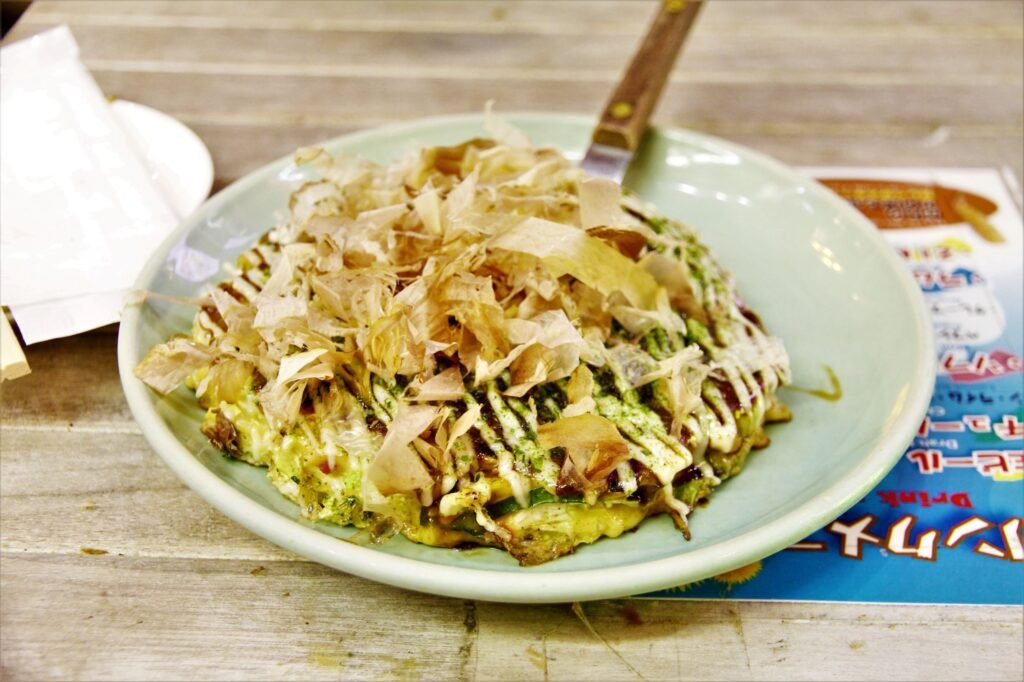
The next snack I started eying initially looked like dessert, small dough balls covered in dark sauce, looking very much like the sweet round Danish pancakes, Aebleskiver. They were prepared on a heavy cast iron pan with small round molds, a larger version of the Aebleskiver pan I have at home.
“These are takoyaki, octopus balls,” Victor announced after some laborious googling.
“Like balls made out of octopus or… octopus… balls?” I noticed a tourist in line giving me a side-eye.
Victor, who always knows when my questions don’t deserve an answer, silently got in line.
These small round dumplings made of an egg-rich batter and octopus, covered in something like Worcestershire sauce, were absolutely delicious. We also tried an assortment of strange maki (some of it with corn!), some gyoza-looking dumplings, octopus on a stick, and finished our evening staring at a large sign proclaiming, “Kobe Beef!” but having no room or imagination left for any more food.
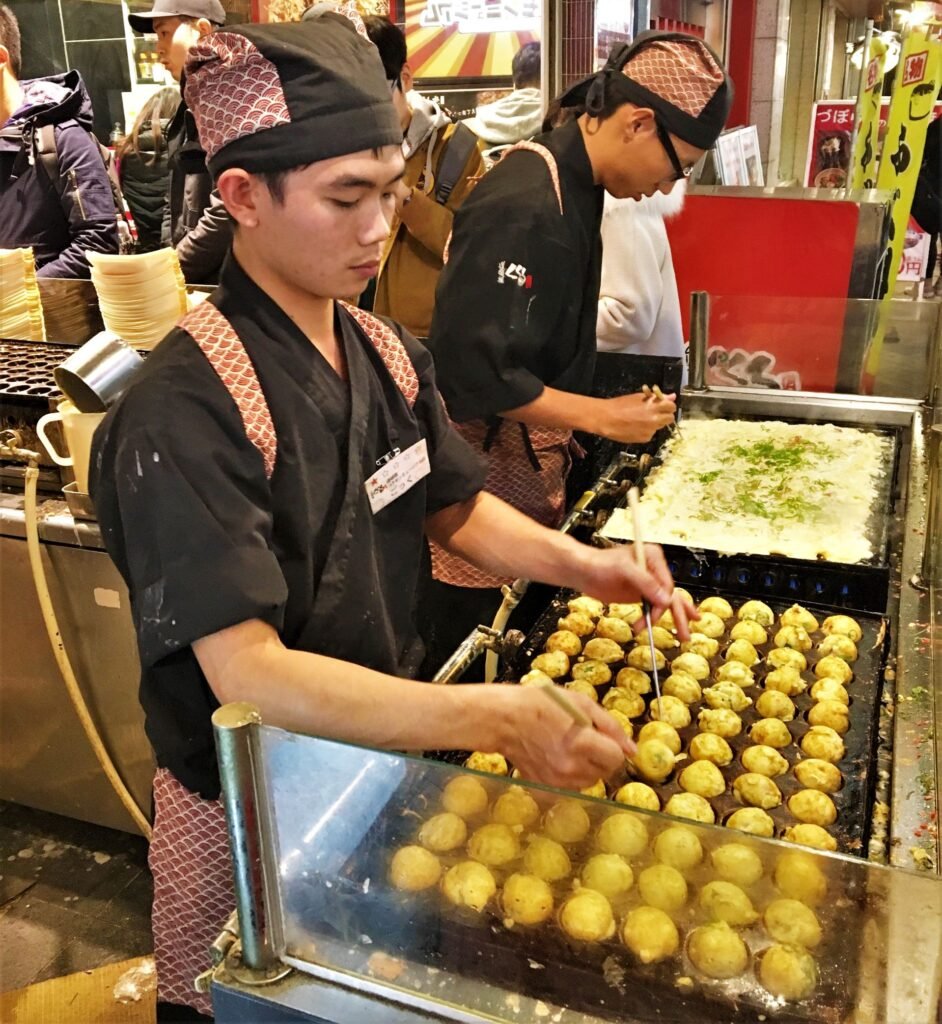
My next favorite place to eat until you drop is the Tsukiji market in Tokyo. The market, back when we visited in 2016, had two separate parts – the inner area was a licensed wholesale market, where early morning freshly-caught fish auctions took place, and the outer market which was a mixture of restaurant supply shops, groceries, and many restaurants, mostly specializing in world’s freshest sushi. Around 2018, the inner market was moved to Toyosu, and only the outer market remains. Walking around Tzukiji was almost a surreal experience. A giant head of tuna displayed outside a restaurant to attest to the freshness and quality of sushi inside was a common sight. The street stalls and restaurant windows displayed every type of seafood imaginable, freshwater eel, sea urchin, bluefin tuna, squid, octopus, scallops, lobster, pufferfish, salmon roe, all grilled, steamed, fried, boiled, or presented raw. Taught by our Dotombori experience to not start shoveling food into ourselves as soon as we see it, we took our time walking around the Tsukiji market to make sure we saw all the potential choices before settling on our lunch. This proved to be an impossible task. The market was a never-ending maze of every type of sushi, maki, sashimi, rice bowls, and seafood on sticks imaginable. We finally collapsed at a table at some random restaurant and had the best sushi and rice bowl of my entire life. Walking back from lunch, we also grabbed a generous portion of various seafood grilled on a large clamshell, two very expensive tuna slices, fresh oysters, a seafood omelet on a stick, and grilled oysters on a stick… We basically learned nothing from Dotombori, and at this point, I am starting to suspect that we never will.
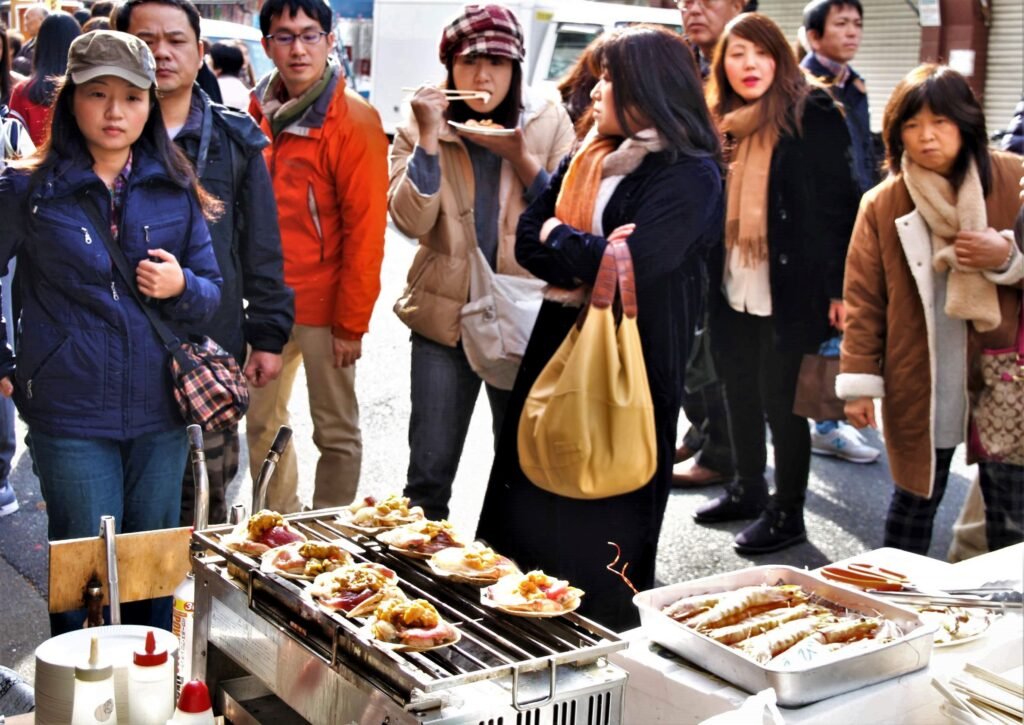

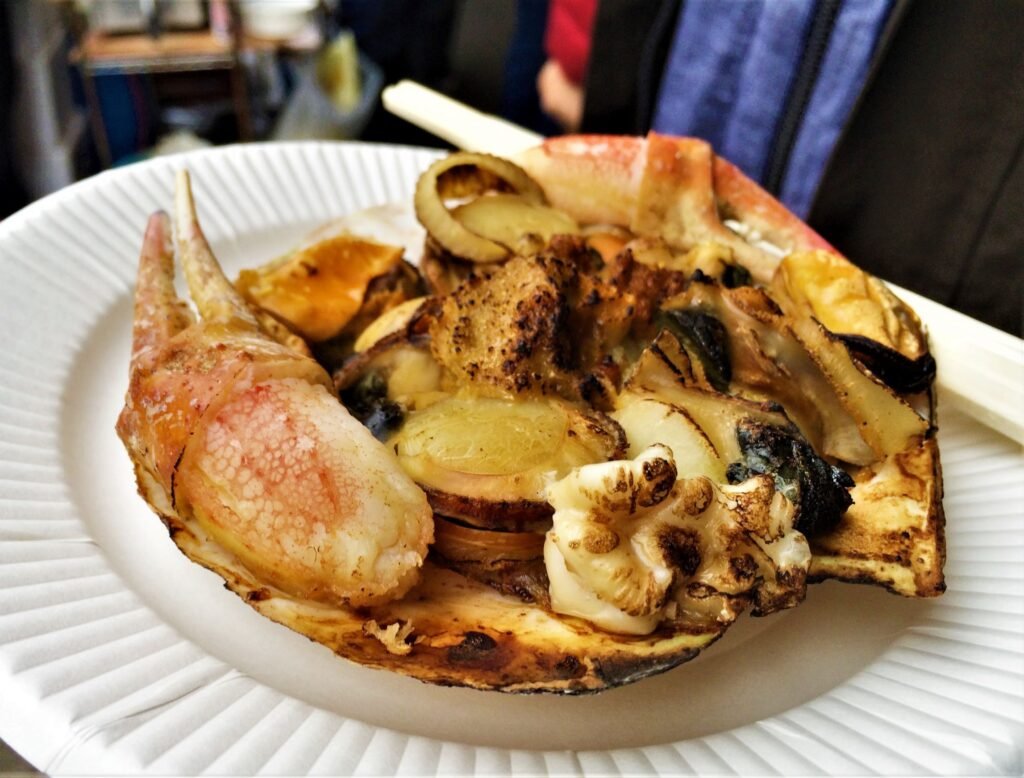
If this all seems too good to be true, let me put a little sobering twist into the fantasy of Japan as a culinary wonderland with one word: dessert. The word that does not exist in the menu of restaurants, as Japanese prefer to end their meals by… finishing their meals and walking off. Yes, there are whole stores dedicated to dessert, but I use that word very loosely here. The shelves of these stores are covered in beautifully wrapped, exquisitely displayed, tempting to take a little taste… things. Things that taste nothing like dessert are supposed to taste. Of course, I am not an expert on Japanese desserts as we only spent 2 weeks there, and there may be excellent Japanese desserts out there, but I didn’t taste any. Everything I tried was either chalky or overly chewy, barely sweet, or weirdly flavored. The only excellent pastries I tried in Japan were French. Croissants, eclairs, crepes, and petit fours crowd Tokyo bakery display windows, just like they do in traditional Parisian cafes. Japanese absolutely love French desserts, which only confused me further. How do the traditional desserts made from red beans, green tea, sweet potato, and rice flour survive the competition next to flaky, buttery, creamy, “best-in-the-world” French desserts? How does one person enjoy both? Or are they catering to different age groups, older generations loyal to traditional confections, while younger generations prefer Western delicacies? These questions might be answered eventually, but not by me, as I am unlikely to ever attempt another Japanese dessert in the future.
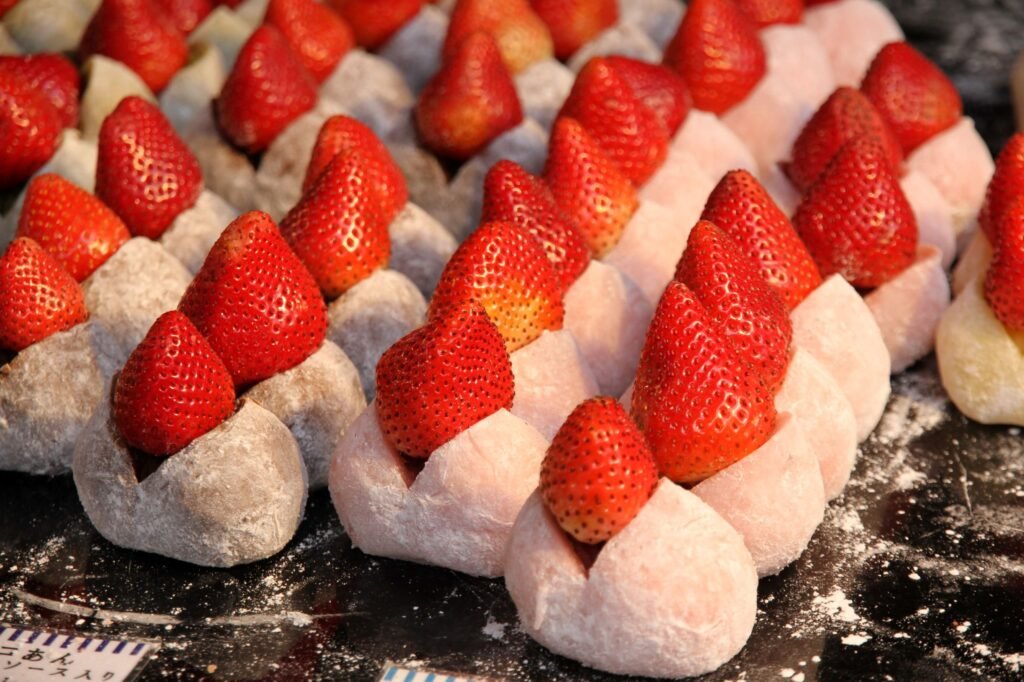
Whether you kuidaore (ruin yourself with food) at a high-end restaurant or a street food stall, Japanese food is not just nourishment; for the uninitiated, it can be an experience, an encounter, and sometimes a full-blown spectacle. At times it’s hard to figure out what you are eating, to get yourself to try something that looks so different, at other times it’s just hard to stop eating.
For comparison, see our other culinary experiences around the world:
Familiar and Strange: The Cuisine of Mexico
Sardines and Egg Custard Tarts: The Overlooked Cuisine of Portugal
Oysters and Omelettes in Small Town France

